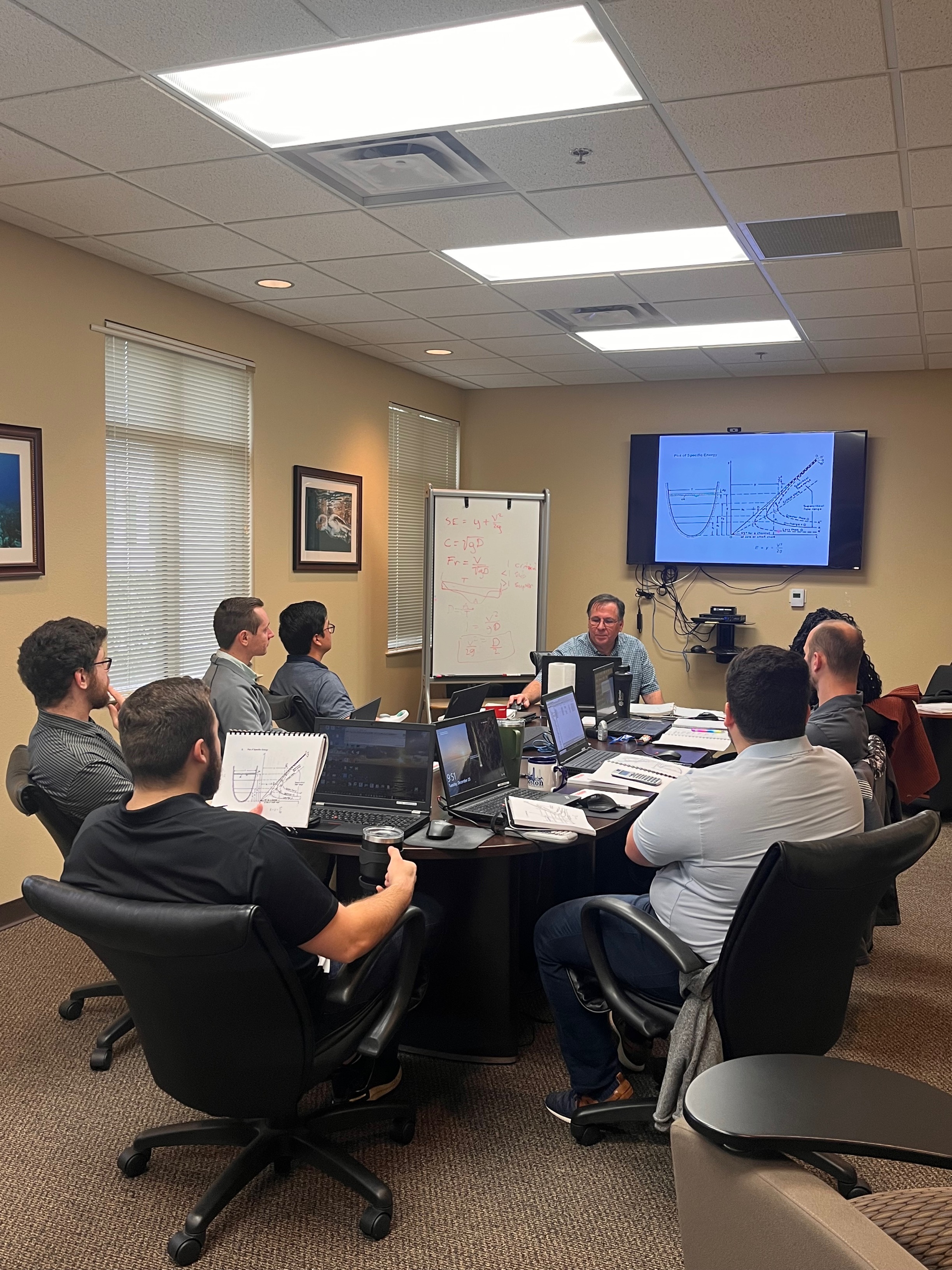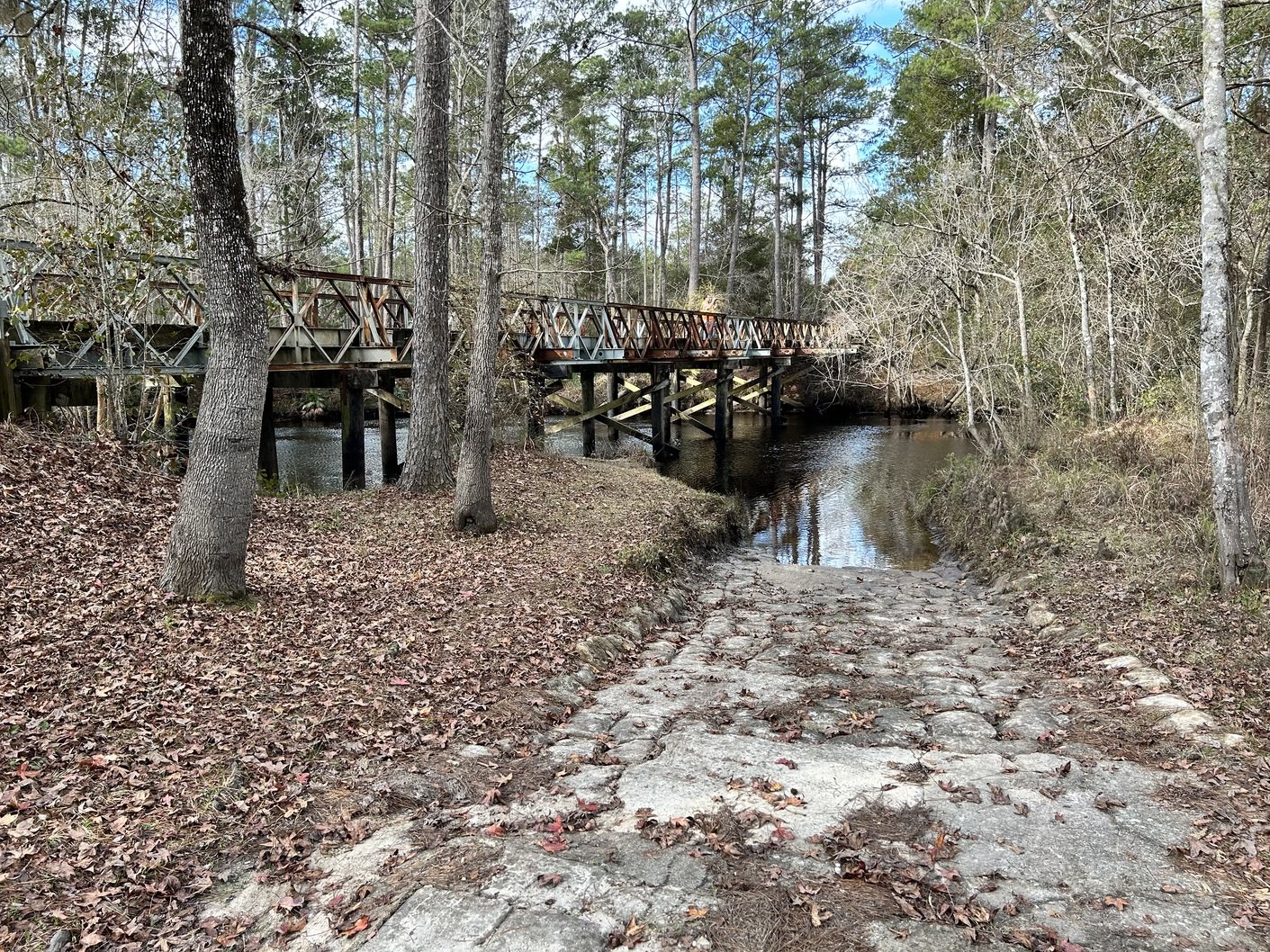As I approach my retirement in May after 41 years as a Hydraulics Engineer, I have recently had the opportunity and pleasure of imparting my knowledge of hydraulics engineering to DRMP’s young and bright drainage engineers. They are conducting work in Florida’s Tate’s Hell Forest, known as the “legendary and forbidden swamp.”
I’m teaching a group of five engineers how to conduct hydraulics computer modeling and reports for the replacement of 11 bridges in the Tate’s Hell Forest in Florida’s panhandle. All but one engineer has never done this type of hydraulics work before, and I have been highly impressed by how quickly these engineers have picked up this knowledge and skill.
The Tate’s Hell State Forest consists of more than 212,000 acres and is in Franklin County between the Apalachicola and Ochlockonee rivers. It’s a popular area for camping, fishing, and all-terrain vehicle recreation.
The Florida Department of Agriculture and Consumer Services hired DRMP as a lead consultant to redesign 11 of 17 structurally deficient bridges being replaced in Tate’s Hell. INTERA, a subconsultant on the project, is redesigning six of the bridges.
A Lesson in Hydraulics
Prior to working for DRMP as a Senior Hydraulics Engineer, I was the State Drainage Engineer at the Florida Department of Transportation (FDOT). During my employment with FDOT, I taught a three-day hydraulics course for 18 years. I recently taught this same course to a group of eight DRMP engineers, including the five working on the Tate’s Hell project, at DRMP’s Orlando, Fla., headquarters. I condensed the course into two days, and it provided 14 hours of professional development credit for each professionally licensed engineer.

The hydraulics reports we’re conducting for the Tate’s Hell project will assist in the design of each bridge. The reports involve four areas of analysis: evaluate how long the bridge should be to span enough floodwater so it doesn’t create problems; assess how high the bridge should be to keep it above floodwaters; predict how much scour is around the bridge’s foundation so engineers make it deep enough; and provide a velocity for structural design because the flow of the water is a force against the bridge, and the engineers have to know how much force to design for. Scouring happens when water flows around a foundation of a structure and loosens the soil. A certain amount of scouring can cause a bridge to fail.
Once we do a computer model of the hydraulics for each bridge, we then draft a report on our findings. I would classify these reports as different than your typical bridge report because these are all small, one-lane bridges we’re assessing. Smaller bridges can be more interesting because there isn’t as much information about them as there would be for large bridges.

When performing hydraulics analysis for a large bridge, such as the Apalachicola Bridge, you have all the information in the world because everybody has studied the Apalachicola River. For small bridges, such as the ones in Tate’s Hell, you must investigate and sharpen your thought process to come up with a solution based on limited information about the bridges.
Bridges Over Troubled Water
In the 1960s and 1970s, the previous owners of Tate’s Hell developed the area as a commercial forest, digging drainage ditches and building dirt roads that significantly altered the hydrology of the forest, according to the Florida Fish and Wildlife Conservation Commission (FWC). In the early 1990s, the State began purchasing the land to protect Apalachicola Bay.
The State is tearing down the bridges and building new ones because the roads are structurally deficient.

Typical roadway crossings of a river will be designed to be passable for a 25-year flooding event or greater. However, most of the roadways in Tate’s Hell are overtopping for a 10-year event or less because they are not elevated high enough above the ground.
Usually, we would raise the elevation of the approach roadways on either side of the bridge under these circumstances. But raising the roads would be costly, and the effects on the hydrology of the swamp would be more significant. If the grade of the roadway is not raised, then the elevation of the bridge cannot be raised, either. This causes concern for potential impacts against the side of the bridges from debris floating in the creeks. However, we have determined the velocities in the creeks are slow, and the force of the impacts will not be significant.
The Legend of Tate’s Hell
One of the most frequently asked questions about this forest is how it got its quirky name. The most common version of the story describes a farmer by the name of Cebe Tate as being lost in the swampy forest for seven days and nights in 1875 while searching for a panther that killed his livestock. During his search, he was bitten by a snake and drank from the murky waters to curb his thirst. When Tate finally came to a clearing near the city of Carrabelle, he lived only long enough to mutter the words, "My name is Cebe Tate, and I just came from Hell."
Today, the roads in the forest make it much easier to get around.
As legendary as this swamp is, the remarkable capabilities and sharpness shown by these young drainage engineers to quickly learn hydraulics makes me proud as I soon retire from the profession. The future of DRMP is in good hands, especially with these bright engineers taking the lead.
















